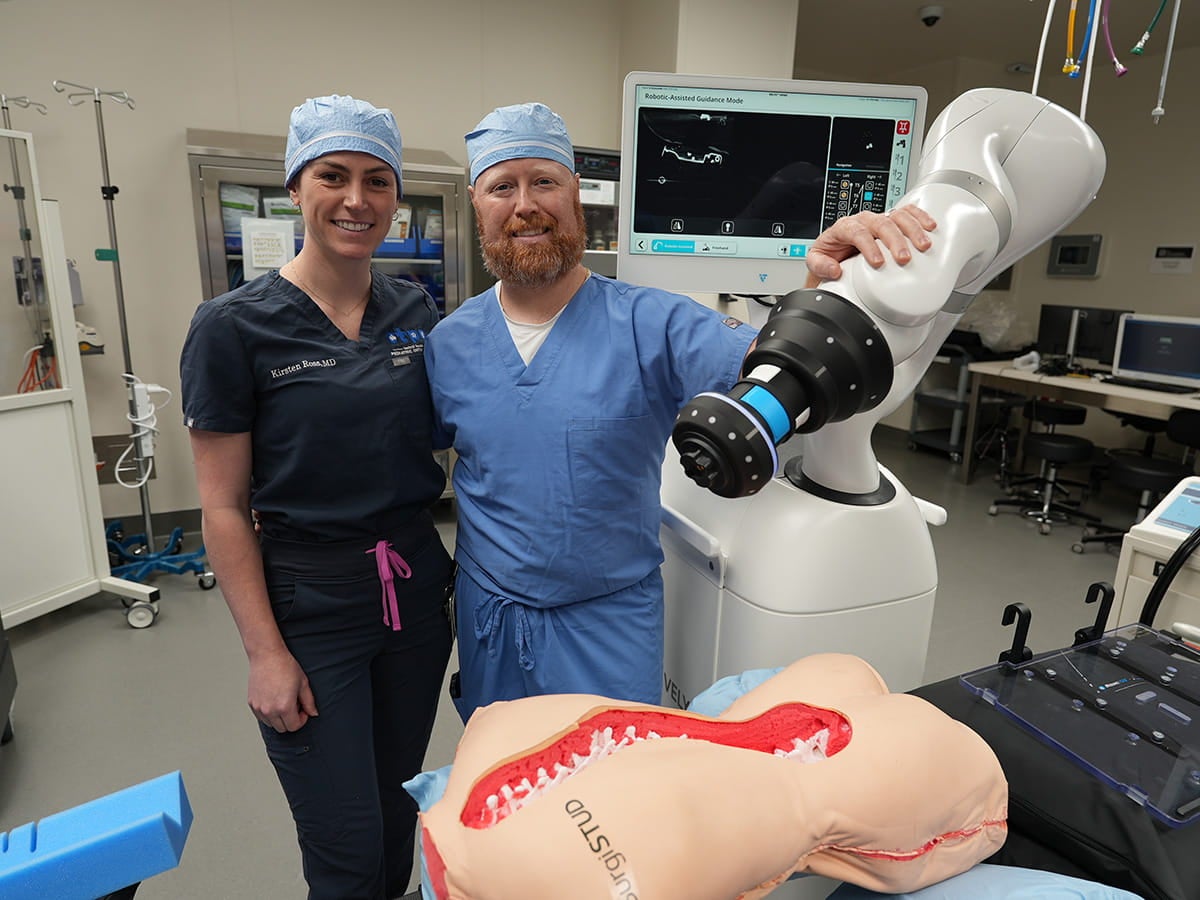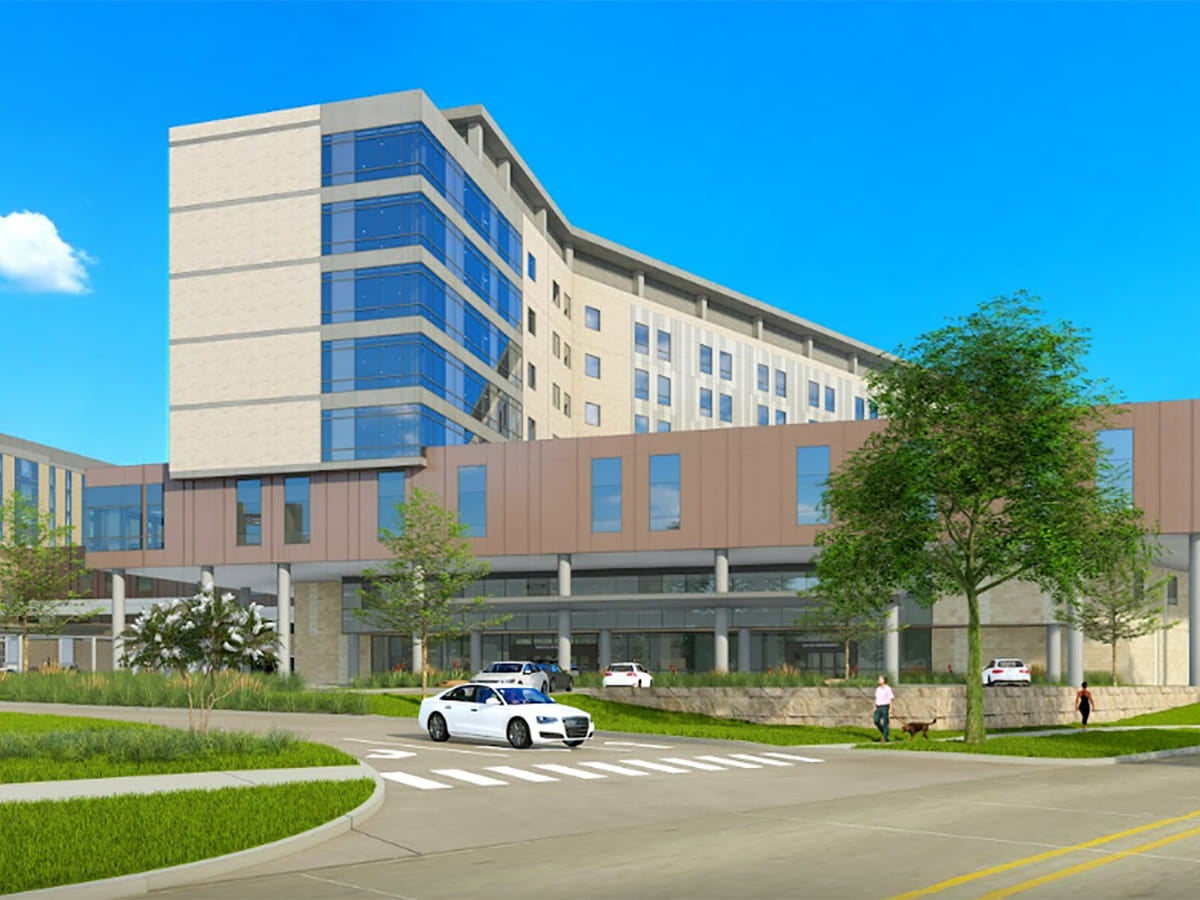The Michael & Susan Dell Foundation has announced a major challenge grant to pay for construction of Seton Healthcare Family’s new teaching hospital in downtown Austin, Texas, and solidify a community-wide plan to provide better care closer to home.
The foundation will match, dollar for dollar, up to $25 million to help The Seton Fund raise $50 million for the new 211-bed hospital now under construction at 15th and Red River streets.
The new hospital – to be called Dell Seton Medical Center at The University of Texas when it opens in 2017 – is estimated to cost $295 million. The first $245 million has been pledged by Seton and Ascension, the nation’s largest Catholic and non-profit health system of which Seton is a Ministry.
The challenge grant comes two years after the Dell family foundation announced a $50 million grant to help build The University of Texas’ Dell Medical School, which will surround the new hospital with research facilities, medical school classrooms, faculty offices and more.
“Since 2003, the foundation’s Central Texas health investments have centered on creating and supporting the elements necessary to provide ‘best in class’ care for local families,” Susan Dell, co-founder and board chair of the Michael & Susan Dell Foundation, said. “We want to promote health, not just treat diseases. Our goal always has been to invest in the future of care for the entire community.”
The announcement marks the Michael & Susan Dell Foundation’s newest investment with Seton. Since 2004, the foundation has granted Seton a total of $31 million for construction and expansion of the region’s first and only freestanding pediatric teaching hospital, the internationally renowned Dell Children’s Medical Center of Central Texas, which also is the region’s Level 1 pediatric trauma center.
The new teaching hospital will be the region’s Level 1 trauma center for adults. It and the Dell Medical School are part of a planned medical campus.
“The day will come when the collaboration between the Michael & Susan Dell Foundation, Seton, UT and local citizens will become the model for communities striving to transform care delivery,” Jesús Garza, Seton Healthcare Family President and Chief Executive Officer, said. Garza also serves as Texas Ministry Market Leader for Ascension Health, the healthcare delivery subsidiary of Ascension.
The Seton Fund, with help from community fundraising volunteers, is spearheading the effort to raise $50 million from the community – one of the largest goals for a single, nongovernmental building campaign in Austin’s history.
“Michael and Susan Dell, who are family-oriented, entrepreneurial and civic-minded, have given Central Texans a simple way to make a meaningful contribution to the future health of this community we all love,” Ken Gladish, Seton Foundations President and Chief Executive Officer, said.
With the Dell announcement, gifts, grants, pledges and matching gift commitments to the campaign now total more than $33 million. Other key donors to the capital campaign include the Lola Wright Foundation, Shivers Cancer Foundation, University Federal Credit Union, Luci Johnson and Ian Turpin, Gary Farmer, the Chaparral Foundation and many more.
“The Michael & Susan Dell Foundation’s generous challenge will encourage even more giving to help us complete the campaign and the hospital, for a better community for all of us,” said Pete Winstead, local attorney and chair of the volunteer campaign committee.
Seton will own and operate the new hospital. It is being built on land owned by UT-Austin and leased to Central Health, Travis County’s healthcare district, which will sublease the land to Seton at fair market value.
Central Health, which owns UMC Brackenridge, is working with the community to determine how best to repurpose that hospital. Central Health also is partnering with Seton and other providers to improve access to quality care.
The combination of a new teaching hospital and medical school on the campus of a major research university is expected to foster related economic growth and create 15,000 new jobs locally, not including construction jobs. About 60 percent of those jobs will require two years of college or a training certificate.



